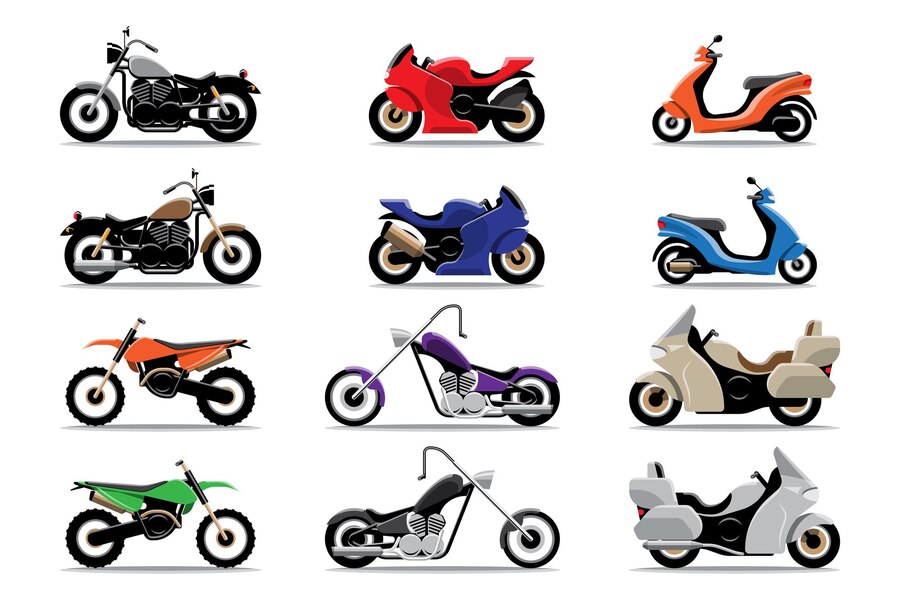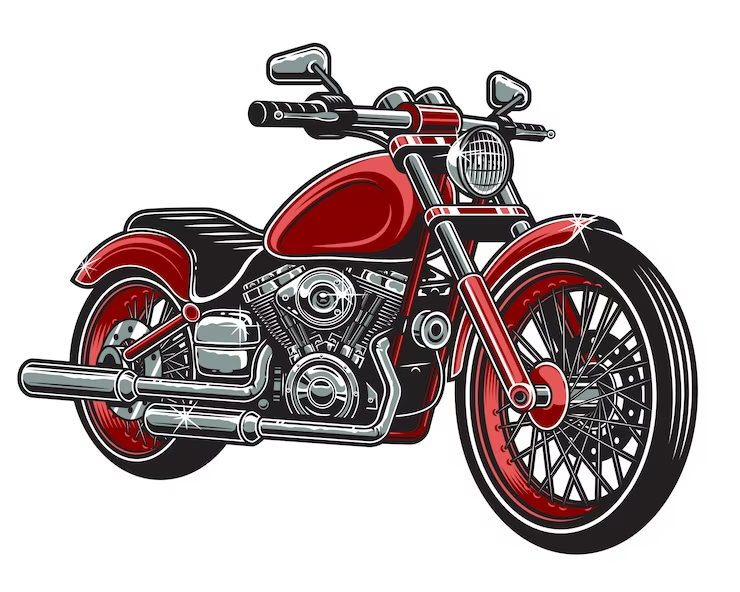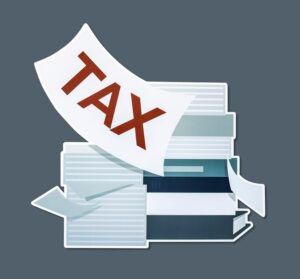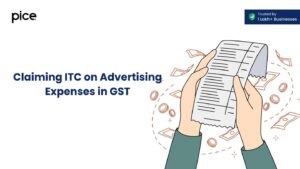HSN Code & Bike Parts GST Rate
- 18 Aug 24
- 14 mins

HSN Code & Bike Parts GST Rate
- Impact of GST on Two-Wheeler Prices
- Bike Parts GST Rate
- GST on purchase of a bike
- GST Impact on Top 10 Indian Bikes Prices
- Bike HSN Code or HS Codes with GST Rate
- GST Rates & HSN Code for Tractors & Motor Vehicles: Motorcycles, Cars, Trailers & Accessories
- Applicability of GST on Bikes
- Impact of GST Rates
- ITC Availability on Bikes
- Conclusion
Key Takeaways
- GST rates vary by engine capacity: Two-wheelers under 350 cc are taxed at 28%, while those above 350 cc attract a 31% rate.
- Lower GST for electric bikes: Electric bikes enjoy a reduced GST rate of 5% to encourage the adoption of environmentally friendly vehicles.
- Impact on pricing: Higher GST rates increase the overall cost of two-wheelers, potentially influencing consumer purchase decisions.
- Input Tax Credit eligibility: Businesses can claim ITC on bikes used for business purposes, helping reduce the overall cost burden.
- Potential for GST rate changes: Ongoing discussions suggest possible adjustments to GST rates, particularly for entry-level two-wheelers, to boost affordability and sales.
The engine capacity of the vehicle affects the Goods and Services Tax (GST) on common two-wheelers in India. Currently, the GST rates for two-wheelers are:
- Two-wheelers with engine capacity under 350 cc: These are taxed at a standard rate of 28%.
- Two-wheelers with engine capacity over 350 cc: These attract a higher GST rate of 31%, which includes a 3% cess in addition to the base rate of 28%.
- GST on Electric Bikes
Electric two-wheeler vehicles, including electric bikes, benefit from a reduced GST rate aimed at promoting cleaner energy use. The GST on electric bikes is significantly lower at 5%, which is part of the government's initiative to encourage the adoption of electric vehicles.
- GST on Two-Wheeler Insurance
The GST for insurance policies, including those for two-wheelers, is set at 18%. This rate applies uniformly across different types of two-wheeler insurance policies, whether for electric bikes or conventional ones.
Impact of GST on Two-Wheeler Prices

The impact of GST on two-wheeler prices is a clear example of how tax policies can influence both consumer behavior and broader industry trends.
- Economic Impact
- Price Increase: The implementation of GST has led to an increase in the prices of two-wheelers. Since the tax is levied on the ex-showroom price, the final on-road price for the consumer rises accordingly. This can affect consumer purchasing decisions, particularly in price-sensitive segments of the market.
- Sales Volume: Higher prices due to the GST may deter buyers, potentially leading to reduced sales volumes for manufacturers. This is especially impactful in rural areas and among lower-income consumers, where affordability is a key decision factor.
- Market Dynamics: The higher tax rate can also influence the type of vehicles that consumers opt for, potentially shifting demand from higher to lower engine capacity bikes or from petrol to electric models, given the lower GST on electric vehicles (5%).
- Industry Responses
- Calls for Reduction: There have been ongoing calls from various stakeholders in the automobile industry to reduce the GST rates on two-wheelers, especially for the entry-level segments (up to 125cc), to make them more affordable and boost sales. Lowering the GST could help revitalize the market and support the industry, which has been facing challenges like slowing sales even before the pandemic.
- Promotion of Electric Vehicles: The significantly lower GST rate on electric bikes is a move by the government to promote electric vehicles as a part of its environmental and energy sustainability goals. This policy encourages manufacturers and consumers to shift towards more eco-friendly transportation options.
There have been calls from various industry bodies for the government to lower the GST on entry-level two-wheelers (typically those under 125 cc) to make them more affordable. The current rate of 28%, which aligns with the GST charged on luxury and larger vehicles, is seen as prohibitive for boosting sales in this segment.
These GST rates and policies play a critical role in shaping the market dynamics of the two-wheeler industry, influencing everything from consumer purchasing decisions to the financial health of manufacturers and related sectors.
Bike Parts GST Rate
The GST rate on bike parts in India is as follows:
- Motorcycle Parts and Accessories: 28% This includes parts like engines, chassis, transmission components, brakes, suspensions, electrical components, etc.
- Tyres and Tubes: 28% Tyres and tubes for two-wheelers attract a GST rate of 28%.
- Batteries: 28% Batteries used in motorcycles and scooters are also taxed at 28% under GST.
- Helmets: 18% Protective helmets for two-wheeler riders fall under the 18% GST slab.
- Spare Parts and Components: 28% Most spare parts and components used for repairing or maintaining two-wheelers are taxed at 28% under GST, such as gauge oil level, clutch cable,
- Lubricants and Greases: 18% Lubricants, greases, and other similar preparations, such as battery charging used for two-wheelers, are taxed at 18% GST.
GST on purchase of a bike
It's important to note that the GST rate on bike parts and accessories can vary depending on the specific item and its classification under the HSN (Harmonized System of Nomenclature) codes. Some specialized or high-end parts may attract a different GST rate.
These GST rates are significant as they affect the overall cost of purchasing a bike, influencing consumer decisions and impacting the two-wheeler industry at large. The on-road price, which represents the actual amount the buyer pays, rises as a result of the GST application to the bike's base price. This on-road price includes the ex-showroom price (basic cost of the vehicle plus GST) plus any additional charges such as road tax, insurance, and registration charges.
For electric bikes, a different, much lower GST rate of 5% applies, aimed at promoting the adoption of environmentally friendly electric vehicles. This reduced rate makes electric bikes more affordable and attractive to consumers, supporting the government's initiatives toward sustainable transportation solutions.
In addition to the GST on the purchase price, other related costs, such as bike insurance policies and servicing, also attract GST. The standard rate for these services is 18%, which applies to the premiums for bike insurance as well as to labor charges in servicing.
These tax structures are designed to align with the government's policies on vehicle safety, emission standards, and environmental conservation, and they can be subject to revisions based on the prevailing economic conditions and policy objectives.
GST Impact on Top 10 Indian Bikes Prices
The GST impact on the prices of top-selling bikes in India can be significant due to the different GST rates applied based on engine capacity. Here’s an overview of how GST affects the prices of some of the most popular bikes in the Indian market:

- Hero HF Deluxe, Hero Splendor, Hero Glamour, Hero Passion, Honda Dream Yuga, Honda CB Shine, Bajaj Platina, Honda CB Unicorn 150
These bikes generally have engine capacities of less than 350 cc. Therefore, they are subject to a bike GST percentage rate of 28%. This rate is relatively high compared to many other goods, leading to a noticeable increase in the final price consumers pay.
- Royal Enfield Classic 350
This bike has an engine capacity just at the 350 cc threshold but usually is categorized under the higher GST slab due to some variants exceeding the limit. As such, it can attract a GST rate of 31% (28% GST + 3% cess), which makes it more expensive compared to smaller bikes.
- Bajaj Pulsar
Depending on the specific model of the Pulsar (as there are multiple variants with different engine capacities), the GST could be either 28% for models under 350 cc or 31% for those over 350 cc. This affects the pricing accordingly, pushing the cost higher for the larger engine models
General Impact
- Cost to Consumer: The higher GST rates directly increase the cost to the consumer, which can affect sales volumes, especially in cost-sensitive market segments.
- Market Shifts: Higher taxation on larger bikes might shift consumer preference towards more economical, lower-cc bikes, especially in a price-sensitive market like India.
- Encouragement of Electric Bikes: With a significantly lower GST of 5% on electric bikes, there is a push towards adopting more eco-friendly vehicles.
Bike HSN Code or HS Codes with GST Rate
The Harmonized System Nomenclature (HSN) code system is used globally for classifying goods for taxation purposes, including GST. For two-wheelers (bikes and motorcycles), the HSN codes help in determining the applicable GST rate based on specific categories and specifications of the vehicles.
HSN Codes for Bikes
- HSN 8711: This code is used for motorcycles (including mopeds) and cycles fitted with an auxiliary motor, with or without sidecars. This broad category covers most two-wheelers that are common on the roads.
GST Rates for Bikes under HSN 8711
- Up to 350 cc: Bikes with an engine capacity of up to 350 cc are taxed at a GST rate of 28%.
- Above 350 cc: Bikes with an engine capacity above 350 cc attract a GST rate of 31%, which includes a 3% cess over the base rate of 28%.
For electric bikes, which are also classified under the same HSN code but specified as electric motor vehicles, the GST rate is considerably lower:
Electric motorcycles (including electric bikes): These are typically charged a GST of only 5%, as part of the government’s initiative to promote electric vehicles.
These rates reflect the government’s approach to taxation based on the type of vehicle, its engine capacity, and environmental considerations (in the case of electric vehicles). The HSN code system ensures uniformity in taxation and facilitates the streamlined application of GST across different categories of goods, including two-wheelers.
GST Rates & HSN Code for Tractors & Motor Vehicles: Motorcycles, Cars, Trailers & Accessories
These categories cover a broad spectrum of vehicles, including those specifically designed for special purposes like ambulances and firefighting vehicles, as well as everyday vehicles like cars and motorcycles.
The rate varies depending on the vehicle type, its intended use, and certain specific characteristics like engine capacity and whether the vehicle is new or used. This differentiation in GST rates aims to cater to various segments of the vehicle market, balancing between revenue generation through taxes and encouraging certain types of vehicle usage through lower taxes.
| HSN Code | Description | GST Rate (%) |
|---|---|---|
| 87 | Fuel Cell Motor Vehicles | 12 |
| 8710 | Tanks and other armoured fighting vehicles | 12 |
| 8701 | Tractors (except road tractors for semi-trailers of >1800 cc) | 12 |
| 8701 | Road tractor semi-trailers of engine capacity > 1800 cc | 28 |
| 8702 | Motor vehicles for the transport of ten or more persons | 28 |
| 8703 | Various categories of old and used vehicles | 12, 18, 28 |
| 8704 | Refrigerated motor vehicles; Motor vehicles for the transport of goods | 18, 28 |
| 8705 | Special purpose motor vehicles | 18 |
| 8706 | Chassis fitted with engines | 28 |
| 8707 | Bodies (including cabs), for the motor vehicles | 28 |
| 8708 | Parts and accessories of motor vehicles | 18, 28 |
| 8709 | Works trucks, self-propelled | 18 |
| 8711 | Motorcycles (including mopeds) and cycles with auxiliary motor | 28 |
| 8712 | Bicycles and other cycles (not motorised) | 12 |
| 8713 | Carriages for disabled persons | 5 |
| 8714 | Parts and accessories of bicycles and other cycles | 12, 18 |
| 8715 | Baby carriages and parts thereof | 18 |
| 8716 | Trailers and semi-trailers; other vehicles not mechanically propelled | 18 |
Applicability of GST on Bikes

In India, a number of factors, primarily the engine size and type of vehicle (electric vs. non-electric), determine whether GST is applicable to bikes.
Here’s how GST applies across different categories:
- Electric Bikes
Electric bikes, which are encouraged due to their environmental benefits, attract a much lower GST of 5%. This is part of broader efforts by the government to promote electric vehicles as a sustainable alternative to traditional combustion engines.
- Non-Electric Bike
For non-electric bikes in India, the GST rate is determined by the engine capacity: bikes with an engine capacity under 350 cc are taxed at 28%, while those with a capacity above 350 cc have a GST rate of 31%, which includes a 3% cess.
Impact of GST Rates
The GST rates have a direct impact on the pricing of bikes, affecting their affordability and market demand. Higher rates can make bikes significantly more expensive, potentially deterring buyers, especially in the cost-sensitive segments of the market. Conversely, the lower rates on electric bikes aim to make them more appealing to consumers, supporting the shift towards cleaner energy use.
- Cess and Additional Charges
The addition of cess for bikes over 350 cc is a method to tax luxury or non-essential goods at a higher rate, which is common in many tax systems globally. This not only affects the final retail price but also influences buyer preferences, possibly steering them towards lower-cc models.
- Administration and Compliance
The use of HSN (Harmonized System of Nomenclature) codes in the GST system helps in categorizing bikes accurately for taxation purposes. This ensures uniformity and simplifies the process of GST filing and compliance for manufacturers and dealers.
ITC Availability on Bikes
- The availability of input tax credit (ITC) on bikes in the context of GST (Goods and Services Tax) in India plays a critical role in the financial dynamics of businesses involved in the purchase and sale of bikes.
- Eligibility: ITC is available to businesses for the GST paid on the purchase of bikes, provided these bikes are used for business purposes. This means that dealers, rental services, and businesses that use bikes for operational purposes can claim ITC.
- Scope of Claim: The ITC can be claimed on the GST paid on the purchase of the bike itself, as well as on any GST-incurred expenses related to the maintenance and upkeep of the bikes.
- Restrictions: There are specific conditions under which the ITC can be claimed. For instance, if a bike is purchased exclusively for personal use, the ITC cannot be claimed. Additionally, the input tax credit is not available for motorcycles or other vehicles with a seating capacity of up to 13 persons (including the driver), except when they are used for making the following taxable supplies, namely:
- Further supply of such vehicles or conveyances;
- Transportation of passengers;
- Imparting training on driving such vehicles or conveyances.
- Documentation and Compliance: To claim ITC, businesses must ensure proper documentation and compliance with GST regulations. This includes maintaining valid GST invoices, filing returns on time, and ensuring that the purchase matches with the GST compliance requirements aimed at business usage.
- Cess and ITC: Compensation Cess: For bikes with an engine capacity above 350 cc, where a compensation cess is applicable in addition to the GST, the ITC can also be claimed on this cess component, following the same rules and restrictions as applicable to the GST.
Conclusion
The GST structure on two-wheelers in India has a multifaceted impact on both consumers and the industry. With GST rates varying based on engine capacity—28% for vehicles under 350 cc and 31% for those above—pricing strategies and consumer purchasing behavior are significantly influenced. Additionally, the reduced GST rate of 5% on electric bikes showcases the government's push towards environmentally sustainable transportation solutions.
While the industry grapples with these tax implications, the potential adjustment of GST rates could offer a vital stimulus for growth, especially in the post-pandemic economic recovery phase. This nuanced taxation policy not only affects sales but also steers the industry's evolution towards innovation and greater market adaptability.
💡Facing delays in GST payment? Get started with PICE today and streamline your GST payments. Click here to sign up and take the first step towards hassle-free GST management.
 By
By 

















